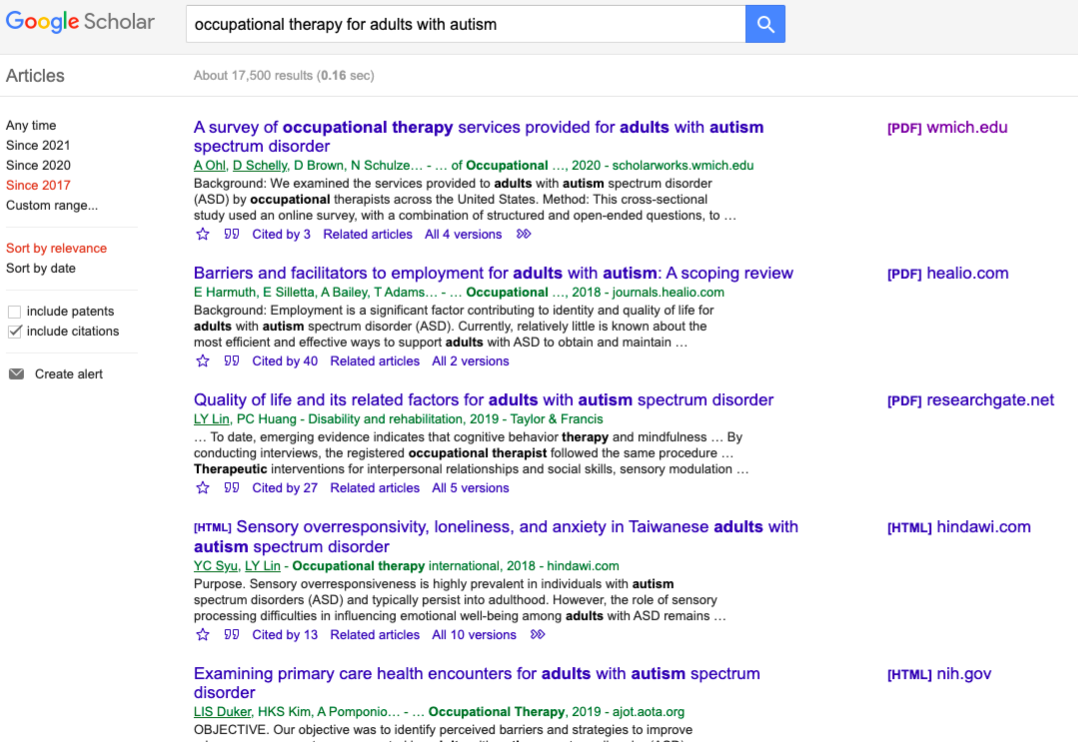The Difference Between Traditional and Emerging Practice Settings
In the sphere of occupational therapy, the ultimate goal of a specialist is to ensure the adequacy of patients’ capabilities to live a healthy and functional life while addressing their special needs induced by health impairment, disorder, or disability.
Regardless of the setting of practice, all occupational therapy interventions are grounded on evidence-based practice, which is the result of research findings of scholarly studies. Moreover, the very fact of the identification of new practice settings is based on research results that reflect the current needs of the served population. In such a manner, two types of practice settings might be identified, namely traditional and emerging. The main difference between these two settings is in the generalizable and standardized approach used in a traditional setting that primarily serves average population needs and the specialized, need-specific interventions provided to marginalized population groups.
Indeed, the distinction between traditional and emerging practice settings is related to the specifics of the applicable interventions and population that is typically placed in such settings. Overall, “occupational therapists and occupational therapy assistants help people across the lifespan participate in the things they want and need to do through the therapeutic use of everyday activities (occupations)” (American Occupational Therapy Association [AOTA], n.d., p. 1).
Traditional practice settings include hospitals, skilled nursing facilities, clinics, and home health (AOTA, n. d.). On the contrary, emerging practice settings are the ones based in venues and areas that are not approached by traditional occupational therapy setting interventions but are vital for a large portion of the population. In particular, these settings are community, academia, early intervention, mental health, schools, and others (AOTA, n. d.). Emerging settings might include but are not limited to such health concerns as autism, cancer and oncology, mental health disorders, veteran healthcare, transplantation, telehealth, technology-assisted rehabilitation, and others.
In conclusion, the identified differences between traditional and emerging practice settings in occupational therapy demonstrate the importance of emerging settings in addressing some tentative and particular needs of patients that experience everyday activity difficulties. The integration of emerging settings into conventional occupational therapy programs and interventions will allow making this professional sphere more inclusive. People with particular needs will have access to occupational assistance not only in healthcare facilities but also in their everyday life environment.

Article Details
Ohl, A., Schelly, D., Brown, D., Schulze, N., Smith, M., & Davies, B. (2020). A survey of occupational therapy services provided for adults with autism spectrum disorder. The Open Journal of Occupational Therapy, 8(2), 1-13. Web.
PICO Worksheet
PICO Worksheet and Search Strategy
Name: ________
Define your question using PICO or PIO by identifying: Problem, Intervention, Comparison, Group, and Outcomes. Analyze the evidence, turn in your article, and completed PICO worksheet by ____________.
- Short Description of traditional setting: a conventional healthcare facility where patients are placed for treatment, recovery, rehabilitation, or long-term facilities
- Short Description of emerging practice setting: a setting that is not particularly designed for healthcare interventions, such as academia, schools, community centers, or other non-traditional facilities where people with disabilities can obtain specifically designed services aimed at addressing specific needs. These needs might include living with a mental health disorder, adjusting to everyday life with intellectual disability, transplantation rehabilitation, oncology, or other specific conditions.
- Is the selected article related to one of the above practice settings? If so, which. The identified article is related to the emerging practice settings. According to the study, it aims at examining and evaluating the occupational therapy practices provided to patients with autism across different settings of practice (Ohl et al., 2020).
- Patient/Problem: Adults with autism.
- Intervention: community-based vocational training.
- Comparison (Optional): adults with physical impairments.
- Outcome: Improved adaptability of patients and the improvement of their health management skills.
Write your question: For adult patients with autism, will the implementation of community-based vocational training be more effective than for adults with physical impairments in terms of improved adaptability of patients and the improvement of their health management skills?
- Type of question: Circle one: Therapy/Prevention Diagnosis Etiology Prognosis
- List main topics and alternative terms from your PICO question that can be used for your search. Occupational therapy for adults with intellectual disability, community-based therapy for vocational training, autism as addressed by occupational therapy.
- List where you plan to search: The databases where studies relevant to the postulated question might be found include the following: Google Scholar, CINAHL, Web of Science, and PubMed.
Analyze Evidence
- Type of study: Circle one: Meta-Analysis Systematic Review Cohort Study Randomized Controlled Trial Case series or Case Report.
- Comprehension: Bullet point the following to assist you with incorporating research into your competency: Objective; Method; Results and Conclusion.
- The objective of Study: The objective of the identified exemplar article is to examine the quality and characteristics of the occupational therapy services provided to patients with autistic spectrum disorder across the United States of America. The study was conducted to collect and interpret the scope, quality, and overall impact of the therapeutic interventions. It was aimed at investigating the process of “acquiring and enhancing independent living skills to participate at home, school, work, and in the community” for patients (Ohl et al., 2020).
- Method: The method used by scholars is a cross-sectional study using an online survey; “descriptive, inferential, and nonparametric statistics” (Ohl et al., 2020, p. 1).
- Results: Study results indicate that educational courses, formal mentorship, and conventional therapy are predominantly used for the population. Most of the participants (occupational therapists) spent half of their working week delivering therapy to patients with autism (Ohl et al., 2020).
- Conclusion: The study concluded that despite the abundance of practices and settings, occupational therapy for adults with autism remains a niche practice area that necessitates further advancement, research, and development.
References
The American Occupational Therapy Association. (n. d.). Occupational therapy fact sheet. Web.
